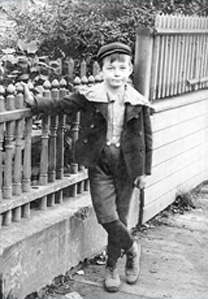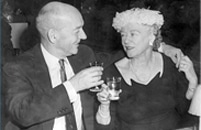History of Robert Filberg
A glimpse into the life of Mr. Robert Filberg and his family.

Bob Filberg
HISTORY
Robert Filberg (Bob) did not come from a wealthy family. His father, Adolph, was a tailor from Sweden. His mother, Elizabeth, was a seamstress of Irish descent from New York. They met in America, and Bob, their only child, was born in Colorado in June of 1892 (although his birth date is controversial). When Bob was around eight years old,[1] he and his parents moved to Seattle. Soon after, Adolph went up north, determined to make his fortune in the Alaskan gold rush. A few months later, the Filbergs received word that Adolph had died. The official report stated that Adolph had frozen to death in a blizzard, but some believe that he was murdered by an ambitious business partner. With the head of the family dead, and with no social security systems at the time, the Filbergs quickly found themselves destitute.
Bob spent his adolescent years travelling around the Western United States looking for work. When he was twelve years old, Bob worked for a dollar a day, carrying water to the loggers on the railway lines in Seattle. He gave all his wages to his mother, who suffered from arthritis. As he got older, he started boxing, and was quite successful as a featherweight boxer. However, he stopped participating in the sport after the Seattle Chief of Police warned his mother that boxing was very dangerous.[2] Over the next few years, Bob worked all over the western United States following work. By 1909, the Comox Valley became his home. Here he found work with the Comox Logging and Railway Company (CLRC), a subsidiary of the Canadian Western Lumber Company, as a Timber cruiser – someone who estimates the amount of harvestable wood in a given area.
While working with the CLRC, Bob became acquainted with Sir J.D. McCormack, the company’s president, and his daughter,Florence. Bob successfully courted Florence and, by 1916, they were married. The newlyweds then moved into a small house at Headquarters, the main base of operations for the CLRC. On Boxing Day of 1920, Mary Filberg was born, and a second child, Robert or “Buddy,” would follow five years later.

Bob and Florence Filberg
It was during this time that the Filbergs’ fortunes began to grow. Mr. Filberg had risen to the rank of Company Superintendent and, later, would become the President. These promotions were due in equal part to his marriage to his boss’s daughter and his skill as a timber man. Under Bob Filberg’s leadership, the CLRC expanded greatly. New logging methods were introduced and more men were put to work in the bush. This expansion, along with high timber prices, made the Company record profits. This new-found fortune allowed the Filbergs to expand their property holding and purchase a summer home in Comox.
In 1929, shortly before the Wall Street Crash (Black Tuesday), Bob Filberg commissioned master builder William Hagarty to build a summer lodge for him and his family. The Lodge, as well as the surrounding buildings, have a Scandinavian theme, now known as the “arts and crafts” style (recognizable for the extensive use of wood, steep pitches on the roofs and a rustic yet upscale look). The house, with its five bedrooms, five fireplaces, and four bathrooms, was massive for the 1930s, and took six years to build. Some people say that Mr. Filberg stretched out the building process to keep his men employed throughout the Great Depression.
Originally, the house was meant to be a summer home, but the Filbergs were so pleased with it that they decided to make the Lodge their permanent home. And, in 1935, Bob and Florence Filberg, along with their two children, Mary and Robert “Buddy” junior, moved into the 4000 square ft Lodge. The property would later be christened “Grancuna” (literal Spanish translation: “the great cradle”).
Bob Filberg died in 1977 (in Hawaii– he owned a house there), and was predeceased by his wife and children. Upon his death, Bob bequeathed the nine acre property and the Lodge, along with 11 million dollars, to the Vancouver Foundation (which has grown into the largest community endowment fund in Canada). Not wanting to see the property developed into housing, the Town of Comox petitioned the Vancouver Foundation for ownership of the property. In 1979, the Lodge became the property of the Town of Comox, and it later became a Municipal Heritage site.
[1] Note: his birth date is controversial – he could have been ten or eleven.
[2] Maria Poje, the Filberg Housekeeper, said this in an interview on May 27th, 2006.
